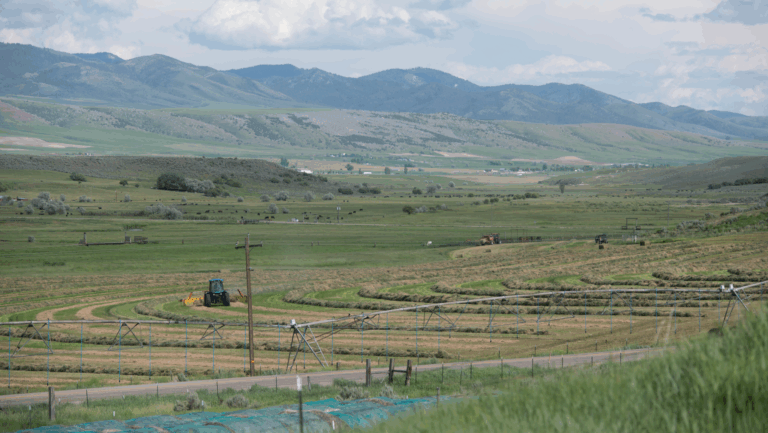Three Tax Breaks to Help You Optimize Your Land-Only Loan
Tax experts weighed in on how you can make the most of your land-only loans. Here’s what they had to say.
Whatever type of agriculture you’re involved in, land is one of your most critical and necessary investments. Land-only loans for agricultural and recreational purposes can provide farmers and ranchers with greater control over their operations, as well as the opportunity to expand their business, increase revenue, and mitigate risks associated with land ownership in rural areas.
In an environment of rising interest rates, making the most out of your land-only loan is essential. Agribusiness operations, as with many businesses, must leverage the tax breaks available to them as they can get each year to lower overhead and conserve capital for the years ahead.
AgAmerica polled several tax experts for tips on making the most of the tax benefits associated with agricultural land-only loans. Here are some key tax benefits they said every farmer should consider.
1. Ensure Proper Zoning Classification with Your Land-Only Loan
One of the largest tax breaks a farmer can receive on land is the agricultural exemption. Ensuring that the land is properly classified as ag land can save thousands of dollars per year in property taxes, but keep in mind that state and local tax laws differ. That’s why it’s important to seek the advice of your local tax professional as you navigate the tax laws in your area.
Bottom line: Consult with your CPA or other tax professional who has experience in your local area or within the industry or commodity in which you operate. These professionals may have knowledge of small nuances in the tax code or local laws to benefit you or your operation.
2. Use Land-Only Loans for a 1031 Exchange
Another tax benefit you might not be familiar with is a 1031 Exchange. A 1031 Exchange is a method of selling and buying property such that you avoid capital gains taxes on the property you’re selling.
“Land classification is something that is worth reviewing on at least an every few years basis. I have dealt with farmers who have had to delay selling their farmland due to issues with their title. It’s not a pleasant process and could have been avoided with some upfront review.”
Paul Neiffer, Certified Public Accountant and Agribusiness Advisor
Ordinarily, when you sell a piece of property, capital gains taxes are assessed on the amount of appreciation that has occurred since you bought the property (the difference in the selling price and the purchase price or the adjusted basis in the property). However, if you use the proceeds from the sale and reinvest them in another, like-kind property, capital gains taxes can be reduced or deferred completely.
Bottom line: A 1031 Exchange can only be utilized for property that is held for productive or investment purposes. 1031 Exchanges can be complicated because of the definition of “like-kind” and certain timing requirements that must be met. You can find more information about “like-kind” requirements for a 1031 exchange here.
3. Tap into Conservation Tax Breaks
From conservation easements to federal and state programs, conservation tax breaks can significantly lower the total tax obligation for farmers and ranchers when done correctly. While these programs provide an outlet to ensure your farm stays in the family for generations, it’s important to consult an expert when applying for these types of programs to ensure paperwork is being filled out correctly so you’re able to take advantage of the full tax deduction for your farm.
“In the right situation, conservation tax breaks through the Conservation Reserve Program (CRP) have great value for farm families that want to keep the land in their family for multiple generations. The primary issue is that the IRS tends to view these as abusive and will likely audit almost any large contribution, and if the paperwork is not done correctly, the farmer will lose the whole deduction.”
Paul Neiffer, Certified Public Accountant and Agribusiness Advisor
Bottom line: Any farmer planning on securing conservation tax breaks needs to seek technical support and consult a competent advisor that specializes in these transactions to avoid preventable mistakes.
Your Trusted Source for Land-Only Loans
As your trusted financial partner, AgAmerica is here for every step of the way, providing you counsel and resources to assist with the land-only loan process and insight into what lenders look for when reviewing land-only loan applications to ensure you’re getting the best bang for your buck.
As the nation’s leading alternative land lender, AgAmerica is committed to supporting farmers, ranchers, and landowners in their effort to invest in agricultural land and keep our domestic food system resilient in the face of change. Whether you are expanding your existing ranch, buying a farm, or making long-term improvements to your agricultural land, our team of experts can build customized land-only loans that meet the needs of your operation as they continue to evolve.
For more information, contact us today to speak with one of our land-only loan experts today.






